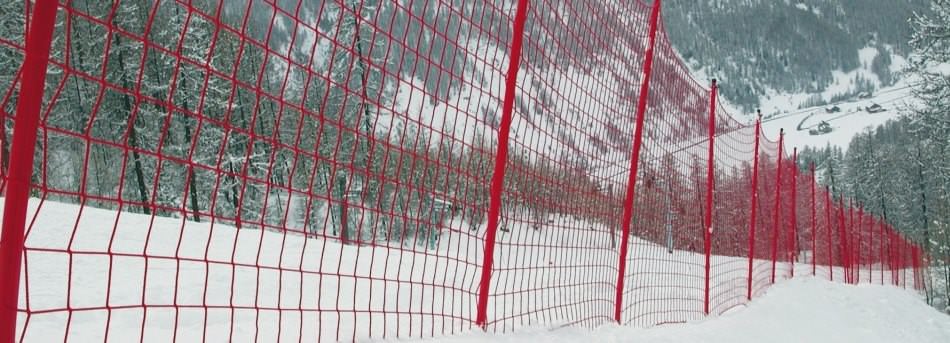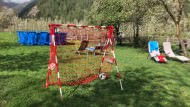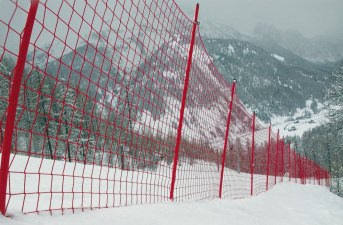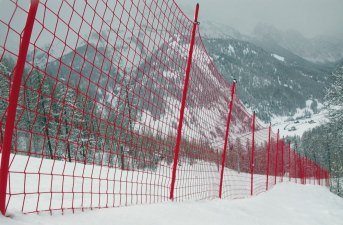
Ski Slope Safety Nets
Ski slope safety nets are installed at the outer edges of ski slopes to ensure the safety of skiers. On the one hand, the nets demarcate the boundary of a slope to aid orientation and on the other, they catch skiers who fall in such a way as to minimise injury to them. Their signal color – red or orange – makes them easily visible.
for flexible posts according to NF S 52-106
Rope Diameter: 5.0 mm
Mesh Size: 100 mm
for rigid posts according to NF S 52-106
Rope Diameter: 5.0 mm
Mesh Size: 100 mm
for flexible posts according to NF S 52-106
Rope Diameter: 5.0 mm
Mesh Size: 70 mm
for rigid posts according to NF S 52-106
Rope Diameter: 5.0 mm
Mesh Size: 70 mm
Ski Slope Safety in Conformity With Different Specifications
At present, there are still no uniform safety regulations for ski slope safety nets. Every country has its own regulations specifying what a ski slope net should be like. However, the International Ski Federation (FIS) has laid down a few requirements, such as a maximum mesh size or catch safety in the event of crashes at certain speeds. However, to date no procedure has been developed to test these values. In Germany, ski slope safety nets are produced in line with the standards for fall safety nets laid down in European Standard EN 1263-1, and must have a minimum energy absorption capacity: because falling from a height is comparable to sliding fast into the ski slope safety net.
Two Different Ski Slope Safety Nets are Available at Safetynet365
- Ski slope safety nets for rigid posts,
with a minimum energy of 3,800 joules in the 3x2 m test net (safety net S1) - Ski slope safety nets for flexible posts,
with a minimum energy of 3,400 joules (safety net S2)
Both nets are deployed in normal skiing operations and in the different disciplines of alpine ski races such as downhill, slalom, giant slalom or Super-G. Especially in top-class sport, the nets must be able to safely catch bodies which crash into them at high double-figure speeds. For this purpose, several nets are sometimes installed parallel and at a short distance from one another. To ensure safety, the material has to be exceptionally thick – 5 mm thick, in fact (the second thickest in Safetynet365’s product range). In addition, the minimum height for safety nets S1 and S2 is 1.30 m. We offer both standard nets for rigid and flexible posts, and non-standard, made-to-measure ski slope safety nets.
modified eCommerce Shopsoftware © 2009-2026
Code & Implementation: Rehm Webdesign















